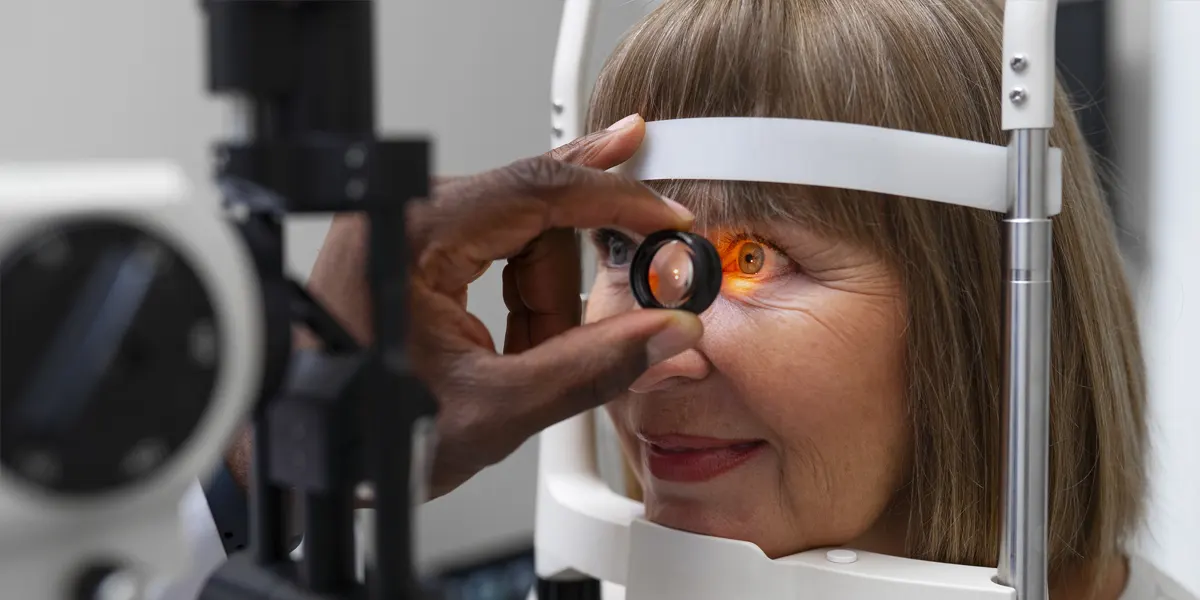
YAG-Peripheral iridotomy
YAG PI, or YAG peripheral iridotomy, is a laser procedure used to treat certain types of glaucoma, particularly angle-closure glaucoma. Glaucoma is a group of eye conditions that can damage the optic nerve and potentially lead to vision loss. In angle-closure glaucoma, the fluid inside the eye cannot drain properly, causing a sudden increase in intraocular pressure.
The YAG PI procedure involves creating a small hole in the peripheral iris, which is the outer edge of the colored part of the eye. This opening allows the intraocular fluid to bypass the blocked drainage system and flow out of the eye more easily, thereby reducing the pressure inside the eye. Performed on an outpatient basis, YAG PI is a minimally invasive procedure that typically takes only a few minutes to complete.
It does not require incisions or sutures and is generally well-tolerated by patients. During the procedure, patients may experience a slight sensation of pressure or warmth in the eye as the laser is applied. The procedure is considered safe and effective for treating certain types of glaucoma and can help prevent further damage to the optic nerve, thus preserving vision.
After the procedure, patients can usually resume normal activities immediately, although they may be advised to avoid strenuous exercise or heavy lifting for a short period. Overall, YAG PI is an important treatment option for managing specific types of glaucoma, offering a quick and relatively painless method to reduce intraocular pressure and maintain eye health.
S.L.T (Selective Laser Trabeculoplasty)
Selective Laser Trabeculoplasty, or SLT, is used when eye drop medications are not lowering the eye pressure enough or are causing significant side effects. It can also be used as initial treatment in glaucoma. SLT has been in use for more than 25 years in the United States and around the world.
- Who is a candidate for SLT?
Patients who have primary or secondary open-angle glaucoma (the drainage system in the front part of the eye is open) and are in need of lowering of their intraocular pressure (IOP) are eligible for the procedure. Your eye doctor will make the final determination if you are a candidate.
- How does it work?
Laser energy is applied to the drainage tissue in the eye. This starts a chemical and biological change in the tissue that results in better drainage of fluid through the drain and out of the eye. This eventually results in lowering of IOP. It may take 1-3 months for the results to appear.
- Why is it called Selective?
The type of laser used has minimal heat energy absorption because it is only taken up by selected pigmented tissue in the eye. Sometimes it is referred to as a “cold laser.” Because of this, the procedure produces less scar tissue and has minimal pain.
- What are the risks?
One key aspect of SLT is a favorable side effect profile, even when compared with glaucoma medications. Post-operative inflammation is common but generally mild, and treated with observation or eye drops or an oral non-steroidal anti-inflammatory drug. There is an approximately 5% incidence of IOP elevation after laser, which can be managed by glaucoma medications and usually goes away after 24 hours.
- How effective is it and how long does it last?
SLT lowers the IOP by about 30% when used as initial therapy. This is comparable to the IOP lowering of the most powerful and commonly used class of glaucoma medication (prostaglandin analogs). This effect may be reduced if the patient is already on glaucoma medications. The effect will generally last between 1-5 years, and in some cases, longer than that. If it does not last at least 6-12 months, it is usually not considered successful.
- What happens if it wears off?
If SLT is effective at lowering IOP but this wears off over several years, the procedure can be repeated. Repeat treatments may or may not lower IOP as much as the first, and continued repeat laser will eventually not be effective. Some doctors may elect to treat half of the tissue on the first treatment, then treat the second half at a later date (this is not considered repeat treatment, and is completion of treatment). If SLT is not initially successful, repeat treatment is not likely to be effective. Alternatively, glaucoma medication can be used if the effect wears off over time.
- What happens if it doesn’t work?
If SLT fails to lower the IOP, then the glaucoma is treated by other means such as medications or surgery. The laser does not affect the success of these other types of treatment.
- What is the cost?
Since the procedure is an accepted glaucoma treatment, and is FDA approved, it is covered by Medicare and medical insurance. The cost for an uninsured individual or with an insurance co-pay will vary.
- Will I still need to use glaucoma medications?
Some patients can be controlled with just laser treatment. Others require additional IOP lowering and may therefore need to use glaucoma medication as well. Think of the SLT as equivalent to one glaucoma medication. Just as some patients will require more than one glaucoma medication to control their IOP, some may also require laser plus one or more glaucoma medications. It is important to remember that SLT is not a cure for glaucoma, just as medication and surgery are not. Whatever method is used to treat glaucoma, appropriate follow up and testing with your eye care professional is critical.
